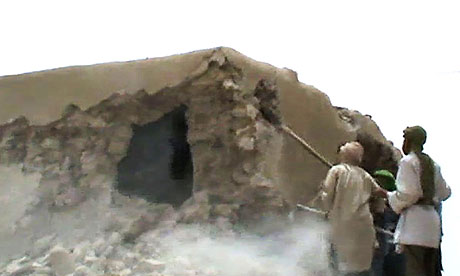An architects sketch can convey many messages in formats ranging from the very neat and precise to the more abstract and surreal. Foster uses his sketchbook as a communication tool with the clientèle and does not consider it artistically precious. The style of drawing is usually informal, riddled with the annotations and arrows that he uses. After looking over several architects' sketchbook work, I have decided to devote more time next-year to my own as I think it will help to voice my ideas and sharpen my design process through a feedback-loop of inspiration.
Friday 20 July 2012
Architects' Sketchbooks
Hand drawing is the most innate tool to the architect. The ability to represent ideas on paper can be extremely important to the decision-making process and is an excellent way to convey the motives of a design. At the very end of my first year, I was talking to my tutor, Marcin, about the realities of the architectural practice. Ultimately, as he explained, the decision that had led him into teaching stemmed through his frustration at the banality of drawing technical details with a CAD program on a 24/7 basis. This digital shift has leaked into the fabric of the school too; with the majority of, even first-year work being produced through a computer. The sketchbook making little or no appearance. Laurie Chetwood, a London based architect, makes the point that a generation of AutoCAD designers "lack the artistic inspiration to create buildings that appeal to users on multiple levels- functionally and emotionally."
Wednesday 18 July 2012
The Lilypad Project
When thinking of green architecture, it is not often that thoughts of floating civilizations come to mind. If Al Gore was right about the state of the earth, then we can expect the North Sea to be at our doorsteps within a matter of decades and that the time for action has been and gone. Vincent Callebaut, a Belgian architect, illustrated a fantastic idea of self-reliant floating cities that would cater for society's continual loss of land. The concept is outlandish but helps to suggest that maybe designers should be looking at a plan B (damage control)- just in case apocalypse is on the horizon.
Each pad is supposed to hold 50,000 residents and relies on sustainable energy from wind and solar, joint with rainwater harvesting. It is a great example of biomimicry at work; Callebaut claims to have been inspired by the Amazon Victoria Regina lily-pad. Though no price estimate has been given for such a titanic project, the architect claims it would still be relatively economical when governments spend billions on making there coastlines bigger and stronger.
Monday 16 July 2012
Shard
On July 5th, our capital city introduced its newest landmark
to the south-bank. The Shard building, standing at 1,016 feet, ousts European
competition in becoming the continents tallest building. Renzo Piano, the
architect, claims the sky-scraper to be part of his 'vision of a vertical
city'. With retail, a hotel, apartments and entertainment, it is appears he's
met his brief.
What is the price of owning the pinnacle of Europe? Harry
Mount wrote in the Telegraph recently about the poor contextual relationship it
has within London (article). Much of Mount's argument seems based on his own
conservative prejudice; talking of the city's deep association with the
neo-classicalists of Wren and Canaletto. His dislike of the aesthetic-"no
ornamentation, no sophistication, just a pyramid of flat planes" seems
slightly typical of the traditionalist perspective. Certainly when detail is
concerned, the façade seems unimaginative. The de-constructivist style is too
subtle to be interesting yet persists in removing any grace out of the iconic
obelisk. The choice of material is relatively sober too and fails to spark much
inspiration.
But just think what the 1880's Parisian must have thought as
Gustave Eiffel added another iron section onto his tower and how they must have
moaned as the classical ambience of their city was rudely interrupted. The
Shard is not a revolutionary design and Piano is probably one of the most
over-rated architects on the scene, however I think this is an eye-sore
Londoners will grow ever more fond of. Advice for the hardened critics...When
Guy de Maupassant was asked why he chose to eat lunch at the Eiffel Tower's
restaurant each day, he replied that it was the one place in Paris where he
could not see the structure.
Saturday 14 July 2012
Ritz Nuneaton
One of the few architectural gems of Nuneaton is approaching a new chapter in its history. The neglected brick bingo hall once served the town as lavish, Art Deco Ritz cinema starting in 1937- built by renowned architects Verity and Beverly famous for cinema design. From 1984 on, it became a Gala bingo hall until the franchise left town, leaving the building to the elements. Its £1.5 million asking price has been met by developers who hope to generate some capital out of the area.
We can only hope these investors are looking to respect this fine building from a revolutionary time in art and architecture. What really draws me to this story is my objection to big cinemas. I think cinema should be revitalised, becoming more social, cultured and independent; breaking away from the multiplex, out-of-town arcades that we seem left with. To see a local cinema in the heart of Nuneaton would inject the town with sophistication and give its people an alternative night out that did not involve stumbling through a piss-ridden nightclub.
But (ranting over), what can we expect from a revamped Ritz? There are some golden standards of the style such as the Grosvenor Cinema or Well Hall Odeon (both in London) that could add inspiration. I am convinced that if the work is put in, the Ritz building will become the best piece of architecture in the town and a huge asset to its culture.
Tuesday 3 July 2012
Mali
Al-Qaeda and their nihilistic north African friends Ansar Dine are going about the systematic destruction and vandalism of Mali's most ancient and sacred buildings. The going belief is that any temple reverencing anyone other than god himself is not worthy of existence. Whist the felling of buildings is not comparable to the massacres these people are undertaking elsewhere in Mali, it symbolizes to me the extreme lack of respect these groups have to the idea of civilization and culture.



As you read this, UNESCO world heritage sites across Timbuktu are being pulled down; such as Sidi Yahya, one of the city's main mosques dating back to the city's golden age in the 15th century. Many more shrines are planned for destruction providing that the 'Defenders of the Faith' get their way. This seems to be bucking the trend of cultural suicide displayed by those that feel the material world- the only one we can even try to hope for- is not one worth enriching, all in the hope of currying favor in some post-life theme park. It may be fashionable in artistic circles to masquerade a sort of objective relativism, though I feel it is just as much our right, those who stand behind the ideals of the enlightenment and the fulfillment of life, to defend heritage and culture from those who sincerely plot its destruction.

It is one of the lasting legacies of religion that we have such transcendent architecture and music to defend, however it is now the religious that pose the greatest threat. Actions like this should remind us of the fragility of our expression and that so long as there are those who claim to love death more than we love life, we will be forced to restrengthen, as Orwell put it, 'the power of facing unpleasant facts'. As for now, I'm starting to see this not as a battle between civilizations, but for civilization.
Subscribe to:
Posts (Atom)












